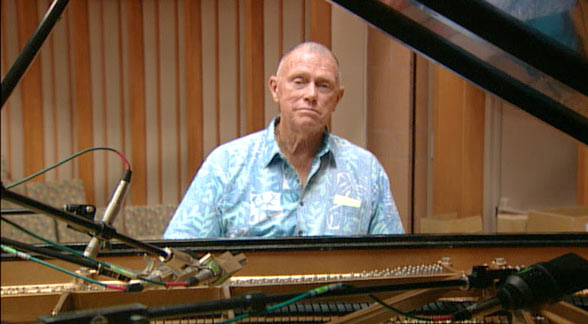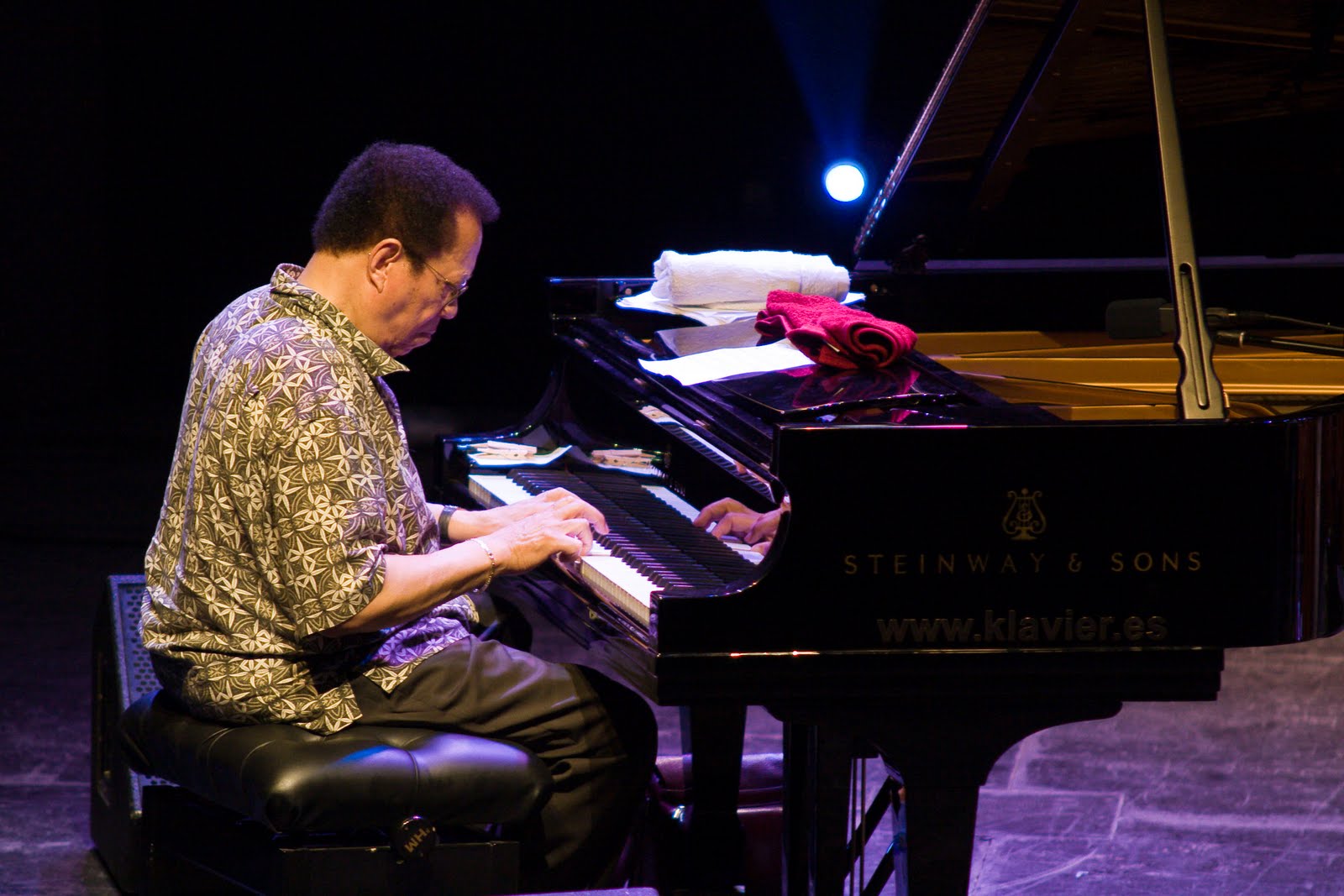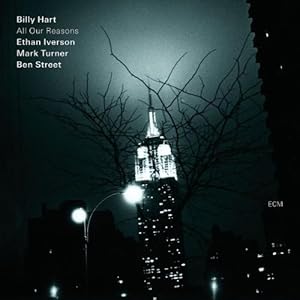For The Love Of Abbey

By Selwyn Harris at JazzWise
The soulful pianist Marc Cary is a long time New York resident who has worked with everyone from high-level American mainstream post-boppers such as Stefon Harris and Roy Hargrove (who featured on some of Cary’s own recordings in the mid-1990s) through to the hip hop legend Q-Tip and neo-soul diva Erykah Badu. But right up there with the career highlights so far are his alliances with jazz vocalists, and not just any jazz vocalists: Cary spent a few years in the 1980s and 90s on tour with Betty Carter before starting a 12-year stint with Abbey Lincoln that lasted until 2006. That’s where this recording comes in; it’s a solo piano set dedicated to Lincoln – the singer and her songs – who passed away in 2010.
Released on the Harlem-based Motéma label, Cary’s playing is packed with drama: orchestral-like ripples and flourishes, richly sustained chords, tremolos and pedal points, but the pianist is also grounded in the earthy rhythms and incantatory folk-melody of the African-American tradition, with McCoy Tyner an important influence on his playing. Yet at the same time he is able to capture the essence of Lincoln’s 13 songs here, and their piercing melancholy (Duke Ellington’s ‘Melancholia’ previously released by Cary, is the odd exception but he says Lincoln loved to hear him play it), much of it drawn from her post-1990s recordings for Verve. The most well known among them are the wonderful, and much loved, ‘Music is the Magic’ and ‘Throw it Away’. The best advice would be to get to know something of Lincoln’s back catalogue first for a more thorough understanding of where Cary’s passionate love letter to the lady is coming from.
Joel Weiskopf

By Selwyn Harris at JazzWise
The soulful pianist Marc Cary is a long time New York resident who has worked with everyone from high-level American mainstream post-boppers such as Stefon Harris and Roy Hargrove (who featured on some of Cary’s own recordings in the mid-1990s) through to the hip hop legend Q-Tip and neo-soul diva Erykah Badu. But right up there with the career highlights so far are his alliances with jazz vocalists, and not just any jazz vocalists: Cary spent a few years in the 1980s and 90s on tour with Betty Carter before starting a 12-year stint with Abbey Lincoln that lasted until 2006. That’s where this recording comes in; it’s a solo piano set dedicated to Lincoln – the singer and her songs – who passed away in 2010.
Released on the Harlem-based Motéma label, Cary’s playing is packed with drama: orchestral-like ripples and flourishes, richly sustained chords, tremolos and pedal points, but the pianist is also grounded in the earthy rhythms and incantatory folk-melody of the African-American tradition, with McCoy Tyner an important influence on his playing. Yet at the same time he is able to capture the essence of Lincoln’s 13 songs here, and their piercing melancholy (Duke Ellington’s ‘Melancholia’ previously released by Cary, is the odd exception but he says Lincoln loved to hear him play it), much of it drawn from her post-1990s recordings for Verve. The most well known among them are the wonderful, and much loved, ‘Music is the Magic’ and ‘Throw it Away’. The best advice would be to get to know something of Lincoln’s back catalogue first for a more thorough understanding of where Cary’s passionate love letter to the lady is coming from.
Joel Weiskopf
Change In My Life
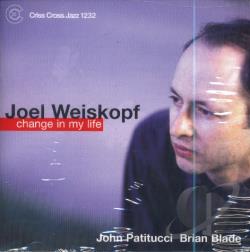
By C. Andrew Hovan
At times living in the shadow of brother Walt, pianist Joel Weiskopf is a serious jazz pianist with an individualistic style that is an amalgam of a great number of influences from American jazz to Brazilian samba. His third date for Criss Cross finds him returning to the trio format of his debut set for the label a few years back. This time around he brings along for the ride two vital members of Wayne Shorter’s current quartet, namely bassist John Patitucci and drummer Brian Blade.
All of the pieces on the hour-long set are Weiskopf originals with titles that allude to the pianist’s strong sense of spirituality. Very much steeped in the McCoy Tyner tradition, Weiskopf speaks with a bell-like tone and a sense of clarity in his solos that is simply remarkable. Post bop sensibilities are at the heart of most of the pieces here, but particularly distinctive is "Righteousness, Peace, and Joy" with its funky beat and in-the-pocket feel. Patitucci lets loose with one of his best solos on this one and Blade keeps everything on the up and up. Other highlights include a heartfelt "Song For My Grandmother" and the shifting accents of "Day of Rejoicing." A mature and advanced player of considerable talents, Weiskopf is at his best here on this most rewarding trio effort. Hopefully it’s one that will bring him even more name recognition.
Francesco Bearzatti: Bizart Trio + Rava

By C. Andrew Hovan
At times living in the shadow of brother Walt, pianist Joel Weiskopf is a serious jazz pianist with an individualistic style that is an amalgam of a great number of influences from American jazz to Brazilian samba. His third date for Criss Cross finds him returning to the trio format of his debut set for the label a few years back. This time around he brings along for the ride two vital members of Wayne Shorter’s current quartet, namely bassist John Patitucci and drummer Brian Blade.
All of the pieces on the hour-long set are Weiskopf originals with titles that allude to the pianist’s strong sense of spirituality. Very much steeped in the McCoy Tyner tradition, Weiskopf speaks with a bell-like tone and a sense of clarity in his solos that is simply remarkable. Post bop sensibilities are at the heart of most of the pieces here, but particularly distinctive is "Righteousness, Peace, and Joy" with its funky beat and in-the-pocket feel. Patitucci lets loose with one of his best solos on this one and Blade keeps everything on the up and up. Other highlights include a heartfelt "Song For My Grandmother" and the shifting accents of "Day of Rejoicing." A mature and advanced player of considerable talents, Weiskopf is at his best here on this most rewarding trio effort. Hopefully it’s one that will bring him even more name recognition.
Francesco Bearzatti: Bizart Trio + Rava
Hope

By Marco Losavio, Alceste Ayroldi per Jazzitalia
IIa prova del BizartTrio capeggiato dal sassofonista Francesco Bearzatti. Con Aldo Romano alla batteria (…e chitarra) ed Emmanuel Bex all'organo, dopo oramai tanti concerti insieme, il trio si muove in modo assolutamente equilibrato nei ruoli, nelle dinamiche, nelle intenzioni e nelle invenzioni musicali.
E' un trio in cui ad ogni azione dell'uno corrisponde una reazione dell'altro spesso quasi anticipata e comunque sempre assolutamente on time. Il trio è talmente ben rodato da permettersi di ospitare senza "costrizioni" la tromba di Enrico Rava il quale, a sua volta, si colloca all'interno dell'impianto sonoro con estrema naturalezza. Lo dimostrano i brani che vedono il trombettista ospite, a cominciare da T Tango in cui Rava sfodera un ottimo solo che aumenta l'intensità del pezzo sino a cogliere dei sovracuti che diventano l'idea iniziale del solo di Bearzatti il quale coglie perfettamente "l'urlo finale" della tromba di Rava come in un ideale, armonioso, passaggio di testimone. La sonorità della tromba ben si integra anche in Caorle, consueto omaggio alle sue origini questa volta sotto forma di bossa nova. Così come nello scenario da sala da ballo anni '50 evocato da Soap Bubble, dove i due fiati conducono la loro danza all'unisono, sorretta dalle armonie insistenti di Bex.
Nel duo con la chitarra classica suonata da Aldo Romano, Enrico Rava interpreta soavemente il melanconico Assenza su cui, forse, sarebbe stato interessante ascoltare il tenore di Bearzatti. Ed è proprio il tenore di Bearzatti a convincere più di ogni altra cosa: una voce splendida, una capacità interpretativa di spessore al punto da sembrare che parli direttamente con l'ascoltatore. E questo lo si può apprezzare in ogni brano persino nell'esecuzione rock di Endless of this Love dove lo stridore del sax si mescola al suono distorto della chitarra fino a confondersi formando quasi una voce corale. Ma Bearzatti, si sa, ama anche il clarinetto che usa con rimarchevoli risultati nel brano dal sapore parigino, Il Camino di Aldo Romano, riuscendo a far immaginare proprio un vecchio camino nell'intento di raccontare secoli di storia che gli sono scorsi dinanzi. Su questo brano va però una particolare nota di merito a Emmanuel Bex che all'organo supporta Bearzatti non solo nel sostegno ritmico e armonico ma anche improvvisando tempestivamente frasi che si contrappuntano in modo esemplare. Un altro esempio emblematico dell'intesa che esiste tra questi musicisti.
In From Halab to Damascus è ancora il clarinetto di Bearzatti a guidarci, questa volta, tra i vicoli di una fusione di suoni tra l'Arabia più pura e le contaminazioni mittileuropee dell'hammond di Bex, con i tempi dettati dal magrebino tambureggiare di Romano.
Accattivanti le rincorse asistoliche di Kids, sospinte da un veloce drumming e da sonorità ancora una volta piuttosto fuori dagli schemi.
Su Aldo Romano non si può dire assolutamente nulla se non che presenzia con classe e maestrìa, con saggezza e regolarità qualsiasi sia la direzione intrapresa dalla loro musica divenendone interprete ed ispiratore al tempo stesso al pari dei suoi compagni.
Il CD si chiude con la title track, Hope, la quale merita un particolare encomio non tanto per la coinvolgente e bella linea melodica o per l'arrangiamento, quanto per l'emozione che riesce a trasmettere nei suoi undici minuti in cui si passa dal soft-funk al quasi jungle offrendo un escursus di tutto ciò che è racchiudibile all'interno di una semplice parola inneggiante alla speranza di un mondo migliore, di un uomo migliore, di un destino migliore. Durante l'ascolto di questa composizione, non possono non scorrere nella mente dell'ascoltatore immagini, eventi che purtroppo oramai caratterizzano costantemente la nostra attualità. Rimane una grande speranza, che tutto ciò non diventi inconsapevolmente una consuetudine…Bearzatti, in una performance di assoluto rilievo, si rende portavoce ideale di questo auspicio riuscendo a porre nell'esecuzione di Hope tutta la sua interiorità maggiormente ravvisabile nel meraviglioso primo minuto di introduzione solitaria del sax.
E la speranza risiede proprio nel recondito desiderio di poter ascoltare solo le dolci note che pervadono il tema anziché gli scenari più apocalittici che sono alimentati, nell'immaginario, dai passaggi più elettronici presenti nel brano.
Il Bizart trio si colloca senza dubbio tra le più interessanti espressioni musicali attualmente in circolazione riuscendo a dosare avanguardia, melodia, tradizione e coinvolgendo l'ascoltatore in un inebriante percorso musicale.
Tracklist:

By Marco Losavio, Alceste Ayroldi per Jazzitalia
IIa prova del BizartTrio capeggiato dal sassofonista Francesco Bearzatti. Con Aldo Romano alla batteria (…e chitarra) ed Emmanuel Bex all'organo, dopo oramai tanti concerti insieme, il trio si muove in modo assolutamente equilibrato nei ruoli, nelle dinamiche, nelle intenzioni e nelle invenzioni musicali.
E' un trio in cui ad ogni azione dell'uno corrisponde una reazione dell'altro spesso quasi anticipata e comunque sempre assolutamente on time. Il trio è talmente ben rodato da permettersi di ospitare senza "costrizioni" la tromba di Enrico Rava il quale, a sua volta, si colloca all'interno dell'impianto sonoro con estrema naturalezza. Lo dimostrano i brani che vedono il trombettista ospite, a cominciare da T Tango in cui Rava sfodera un ottimo solo che aumenta l'intensità del pezzo sino a cogliere dei sovracuti che diventano l'idea iniziale del solo di Bearzatti il quale coglie perfettamente "l'urlo finale" della tromba di Rava come in un ideale, armonioso, passaggio di testimone. La sonorità della tromba ben si integra anche in Caorle, consueto omaggio alle sue origini questa volta sotto forma di bossa nova. Così come nello scenario da sala da ballo anni '50 evocato da Soap Bubble, dove i due fiati conducono la loro danza all'unisono, sorretta dalle armonie insistenti di Bex.
Nel duo con la chitarra classica suonata da Aldo Romano, Enrico Rava interpreta soavemente il melanconico Assenza su cui, forse, sarebbe stato interessante ascoltare il tenore di Bearzatti. Ed è proprio il tenore di Bearzatti a convincere più di ogni altra cosa: una voce splendida, una capacità interpretativa di spessore al punto da sembrare che parli direttamente con l'ascoltatore. E questo lo si può apprezzare in ogni brano persino nell'esecuzione rock di Endless of this Love dove lo stridore del sax si mescola al suono distorto della chitarra fino a confondersi formando quasi una voce corale. Ma Bearzatti, si sa, ama anche il clarinetto che usa con rimarchevoli risultati nel brano dal sapore parigino, Il Camino di Aldo Romano, riuscendo a far immaginare proprio un vecchio camino nell'intento di raccontare secoli di storia che gli sono scorsi dinanzi. Su questo brano va però una particolare nota di merito a Emmanuel Bex che all'organo supporta Bearzatti non solo nel sostegno ritmico e armonico ma anche improvvisando tempestivamente frasi che si contrappuntano in modo esemplare. Un altro esempio emblematico dell'intesa che esiste tra questi musicisti.
In From Halab to Damascus è ancora il clarinetto di Bearzatti a guidarci, questa volta, tra i vicoli di una fusione di suoni tra l'Arabia più pura e le contaminazioni mittileuropee dell'hammond di Bex, con i tempi dettati dal magrebino tambureggiare di Romano.
Accattivanti le rincorse asistoliche di Kids, sospinte da un veloce drumming e da sonorità ancora una volta piuttosto fuori dagli schemi.
Su Aldo Romano non si può dire assolutamente nulla se non che presenzia con classe e maestrìa, con saggezza e regolarità qualsiasi sia la direzione intrapresa dalla loro musica divenendone interprete ed ispiratore al tempo stesso al pari dei suoi compagni.
Il CD si chiude con la title track, Hope, la quale merita un particolare encomio non tanto per la coinvolgente e bella linea melodica o per l'arrangiamento, quanto per l'emozione che riesce a trasmettere nei suoi undici minuti in cui si passa dal soft-funk al quasi jungle offrendo un escursus di tutto ciò che è racchiudibile all'interno di una semplice parola inneggiante alla speranza di un mondo migliore, di un uomo migliore, di un destino migliore. Durante l'ascolto di questa composizione, non possono non scorrere nella mente dell'ascoltatore immagini, eventi che purtroppo oramai caratterizzano costantemente la nostra attualità. Rimane una grande speranza, che tutto ciò non diventi inconsapevolmente una consuetudine…Bearzatti, in una performance di assoluto rilievo, si rende portavoce ideale di questo auspicio riuscendo a porre nell'esecuzione di Hope tutta la sua interiorità maggiormente ravvisabile nel meraviglioso primo minuto di introduzione solitaria del sax.
E la speranza risiede proprio nel recondito desiderio di poter ascoltare solo le dolci note che pervadono il tema anziché gli scenari più apocalittici che sono alimentati, nell'immaginario, dai passaggi più elettronici presenti nel brano.
Il Bizart trio si colloca senza dubbio tra le più interessanti espressioni musicali attualmente in circolazione riuscendo a dosare avanguardia, melodia, tradizione e coinvolgendo l'ascoltatore in un inebriante percorso musicale.
Tracklist:
1 T Tango 7:35; 2 Soap Bubble 5:56 ; 3 From Halab To Damascus 4:55
4 Caorle 5:13 ; 5 End Of This Love 3:38 ; 6 Assenza 2:44 ; 7 Il Camino 3:49
4 Caorle 5:13 ; 5 End Of This Love 3:38 ; 6 Assenza 2:44 ; 7 Il Camino 3:49
8 Body-Trap 4:30 ; 9 Kids 4:45 ; 10 Hope 11:44
Line-up/Musicians:
Line-up/Musicians:
Guitar – Enrico Terragnoli (track 5),Aldo Romano (track 6)
Organ [Hammond] Oscar Marchioni (track 5)
Organ [Hammond] Oscar Marchioni (track 5)
Vocals – Francesco Bearzatti (track 10)
Drums – Aldo Romano,Paolo Mappa (tracks 5,10)
Organ, Electronics – Emmanuel Bex
Tenor Saxophone, Clarinet, Keyboards – Francesco Bearzatti
Trumpet – Enrico Rava (tracks: 1, 2, 4, 6, 9)
Fabizio Bosso & Javier Girotto: Latin Mood
Vamos

By DustyGroove
A sparkling set of Latin jazz, done the Schema way – which means that the team of Favrizio Bosso and Javier Girotto are even tighter than on their previous release for Blue Note! The best tracks here bristle with an upbeat sense of rhythm that's undeniable – grooves that roll out beautifully from the sextet, spurred on with unified energy that's way more than the usual Latin style – very unique, and wonderfully groovy! Bosso's trumpet is as top-shelf as always, a great solo vehicle for the group – and Girotto plays both soprano and baritone sax with a deft touch – alongside drums from Lorenzo Tucci, plus keyboards, bass, and percussion too – all live instrumentation that puts this one more firmly on the jazz side of the Schema spectrum. Titles include "Sophia", "Vamos", "Waltz Del Clavel", "Algo Contigo", "El Mastropiero", "Mathias", "Africa Es", and a surprisingly great version of "In A Sentimental Mood".
Drums – Aldo Romano,Paolo Mappa (tracks 5,10)
Organ, Electronics – Emmanuel Bex
Tenor Saxophone, Clarinet, Keyboards – Francesco Bearzatti
Trumpet – Enrico Rava (tracks: 1, 2, 4, 6, 9)
Fabizio Bosso & Javier Girotto: Latin Mood
Vamos

By DustyGroove
A sparkling set of Latin jazz, done the Schema way – which means that the team of Favrizio Bosso and Javier Girotto are even tighter than on their previous release for Blue Note! The best tracks here bristle with an upbeat sense of rhythm that's undeniable – grooves that roll out beautifully from the sextet, spurred on with unified energy that's way more than the usual Latin style – very unique, and wonderfully groovy! Bosso's trumpet is as top-shelf as always, a great solo vehicle for the group – and Girotto plays both soprano and baritone sax with a deft touch – alongside drums from Lorenzo Tucci, plus keyboards, bass, and percussion too – all live instrumentation that puts this one more firmly on the jazz side of the Schema spectrum. Titles include "Sophia", "Vamos", "Waltz Del Clavel", "Algo Contigo", "El Mastropiero", "Mathias", "Africa Es", and a surprisingly great version of "In A Sentimental Mood".
Tim Lapthorn
Transport

By EastWind
British pianist Tim Lapthorn (b. 1976) began his professional career after graduating from the Guildhall School of Music in London with a jazz postgraduate degree in 2000, and has performed and recorded with his own trio as well as leading jazz musicians such as Chris Potter, Eddie Henderson and Robben Ford.
His fourth, and debut album from the Japanese label Spice of Life, Transport purely consists of original compositions featuring solo, trios and larger ensemles (including with string quartet ). Lapthorn's music is characterized by simple, accessible melodies and lyricism, drawing from jazz, blues, clasical, folk and Brazilian influences.
Beautifully recorded and brimming with lyrical creativity, this is one of the top piano-centric jazz releases of 2012!
Recorded in London, 2011.
Tim Lapthorn (piano)
Arnie Somogyi (bass)
Stephen Keogh (drums)

By EastWind
British pianist Tim Lapthorn (b. 1976) began his professional career after graduating from the Guildhall School of Music in London with a jazz postgraduate degree in 2000, and has performed and recorded with his own trio as well as leading jazz musicians such as Chris Potter, Eddie Henderson and Robben Ford.
His fourth, and debut album from the Japanese label Spice of Life, Transport purely consists of original compositions featuring solo, trios and larger ensemles (including with string quartet ). Lapthorn's music is characterized by simple, accessible melodies and lyricism, drawing from jazz, blues, clasical, folk and Brazilian influences.
Beautifully recorded and brimming with lyrical creativity, this is one of the top piano-centric jazz releases of 2012!
Recorded in London, 2011.
Tim Lapthorn (piano)
Arnie Somogyi (bass)
Stephen Keogh (drums)
Magnetic

By Mark F. Turner
One of today's foremost jazz musicians and composers Terence Blanchard's achievements have soared since his formative days in Art Blakey's Jazz Messengers to a trajectory of successful bands, recordings and award winning film scores such as 2007'sA Tale of God's Will (A Requiem for Katrina) (Blue Note). He's still pursuing new challenges with the upcoming June 2013 premiere of his first opera— entitled Champion, "An Opera In Jazz"— based on the life of world champion boxer Emile Alphonse Griffith.
Blanchard's ideas are still thriving in his twentieth release and return to Blue Note withMagnetic—a vibrant recording colored with the usual consummate performances, and a modernist bent that's replete with compelling themes. The ten compositions are written by various band members consisting of drummer Kendrick Scott, pianist Fabian Almazan, the unfaltering tenor saxophonist Brice Winston and the addition of 21-year-old bass prodigyJoshua Crumbly.
This indicates another clue to Blanchard's vibrancy: his unselfishness mentoring and willingness to learn from younger musicians—one time acolytes and now leaders—like drummerEric Harland, pianist Edward Simon, and West African guitarist Lionel Loueke who guests here on two tracks and also performed on Blanchard's previous Blue Note dates: Bounce (2003) andFlow (2007). Blanchard gives his band members plenty of opportunities to shine. Almazan's "Pet Step Sitter's Theme Song" features a larger-than-life theme with Blanchard's electronically processed trumpet, virtuosic piano work, and Loueke's usual finesse touches on guitar and vocalizations. Crumbly's elegant and stirring ballad "Jacob's Ladder" and Winston's tightly wound swinger "Time To Spare" are memorable and revealing of the artist's multiple talents.
Magnetic's theme rolls out like some galactic metropolis—vast, complex and colored with futuristic techno embellishments. Yet the music is always filled with Blanchard's elongated lines and emotional urgency as found in the opening title track and the moody dreamscape in "Hallucinations." Swing is also a constant element, proven in "Don't Run" as Ravi Coltrane's soprano burns and Ron Carter's muscular bass walks true with bopping precision. Other vivid moments are found in Scott's brilliant "No Borders Just Horizons" where the music moves with feverish intensity and Almazan's superb acoustic/electronic-enhanced solo track "Comet."
These individual threads are intricately woven together by Blanchard's masterful leadership, musicianship, and openness. It's a fine return to Blue Note and another exceptional release in Blanchard's extensive and continuing discography.
Track Listing:

By Mark F. Turner
One of today's foremost jazz musicians and composers Terence Blanchard's achievements have soared since his formative days in Art Blakey's Jazz Messengers to a trajectory of successful bands, recordings and award winning film scores such as 2007'sA Tale of God's Will (A Requiem for Katrina) (Blue Note). He's still pursuing new challenges with the upcoming June 2013 premiere of his first opera— entitled Champion, "An Opera In Jazz"— based on the life of world champion boxer Emile Alphonse Griffith.
Blanchard's ideas are still thriving in his twentieth release and return to Blue Note withMagnetic—a vibrant recording colored with the usual consummate performances, and a modernist bent that's replete with compelling themes. The ten compositions are written by various band members consisting of drummer Kendrick Scott, pianist Fabian Almazan, the unfaltering tenor saxophonist Brice Winston and the addition of 21-year-old bass prodigyJoshua Crumbly.
This indicates another clue to Blanchard's vibrancy: his unselfishness mentoring and willingness to learn from younger musicians—one time acolytes and now leaders—like drummerEric Harland, pianist Edward Simon, and West African guitarist Lionel Loueke who guests here on two tracks and also performed on Blanchard's previous Blue Note dates: Bounce (2003) andFlow (2007). Blanchard gives his band members plenty of opportunities to shine. Almazan's "Pet Step Sitter's Theme Song" features a larger-than-life theme with Blanchard's electronically processed trumpet, virtuosic piano work, and Loueke's usual finesse touches on guitar and vocalizations. Crumbly's elegant and stirring ballad "Jacob's Ladder" and Winston's tightly wound swinger "Time To Spare" are memorable and revealing of the artist's multiple talents.
Magnetic's theme rolls out like some galactic metropolis—vast, complex and colored with futuristic techno embellishments. Yet the music is always filled with Blanchard's elongated lines and emotional urgency as found in the opening title track and the moody dreamscape in "Hallucinations." Swing is also a constant element, proven in "Don't Run" as Ravi Coltrane's soprano burns and Ron Carter's muscular bass walks true with bopping precision. Other vivid moments are found in Scott's brilliant "No Borders Just Horizons" where the music moves with feverish intensity and Almazan's superb acoustic/electronic-enhanced solo track "Comet."
These individual threads are intricately woven together by Blanchard's masterful leadership, musicianship, and openness. It's a fine return to Blue Note and another exceptional release in Blanchard's extensive and continuing discography.
Track Listing:
Magnetic; Jacob’s Ladder; Don’t Run; Pet Step Sitter’s Theme Song; Hallucinations; No Borders Just Horizons; Comet; Central Focus; Another Step; Time To Spare.
Personnel:
Personnel:
Terence Blanchard: trumpet; Fabian Almazan: piano; Kendrick Scott: drums; Brice Winston: tenor saxophone (1, 2, 5, 6, 10); Joshua Crumbly: bass (2, 4-6, 8-10) Ron Carter: bass (1, 3); Ravi Coltrane: soprano saxophone (3), tenor saxophone (4); Lionel Loueke: guitar (4, 5, 9).
Marian McPartland
Marian McPartland
Twilight World

By Ken Dryden
With her long-running series on public radio, Marian McPartland has seemed to many fans to always be a part of jazz. Just a few months shy of celebrating her 90th birthday at the time of these 2007 sessions, the pianist demonstrates why she has been able to play with so many different guests on her program. But this is a regular trio date with her attentive, longtime rhythm section, bassist Gary Mazzaroppi and drummer Glenn Davis. It's hard not to be enchanted immediately with new versions of her upbeat "Twilight World" and the elegant "In the Days of Our Love," the latter played with a hint of looking back on life without getting overly sentimental. McPartland has long been praised as a masterful interpreter of ballads, so her lyrical takes of "Close Enough for Love" and "Alfie" only serve to reinforce her strength in that department. Her good friend, the late Alec Wilder, penned the lush, intricate ballad with her in mind, and it is hard to imagine the notoriously hard-to-please composer (whose frequent comment, according to Marian, was "Play the melody!") not being overjoyed with McPartland's warm rendition. She also delves into the works of other jazz composers with equal enthusiasm, including two spirited explorations of songs by Ornette Coleman, John Lewis' spry "Afternoon in Paris," and a shimmering take of the modal masterpiece "Blue in Green" that is notable for its imaginative introduction. Marian McPartland's Twilight World is among the very best CDs of her long, impressive career.
Track Listing:

By Ken Dryden
With her long-running series on public radio, Marian McPartland has seemed to many fans to always be a part of jazz. Just a few months shy of celebrating her 90th birthday at the time of these 2007 sessions, the pianist demonstrates why she has been able to play with so many different guests on her program. But this is a regular trio date with her attentive, longtime rhythm section, bassist Gary Mazzaroppi and drummer Glenn Davis. It's hard not to be enchanted immediately with new versions of her upbeat "Twilight World" and the elegant "In the Days of Our Love," the latter played with a hint of looking back on life without getting overly sentimental. McPartland has long been praised as a masterful interpreter of ballads, so her lyrical takes of "Close Enough for Love" and "Alfie" only serve to reinforce her strength in that department. Her good friend, the late Alec Wilder, penned the lush, intricate ballad with her in mind, and it is hard to imagine the notoriously hard-to-please composer (whose frequent comment, according to Marian, was "Play the melody!") not being overjoyed with McPartland's warm rendition. She also delves into the works of other jazz composers with equal enthusiasm, including two spirited explorations of songs by Ornette Coleman, John Lewis' spry "Afternoon in Paris," and a shimmering take of the modal masterpiece "Blue in Green" that is notable for its imaginative introduction. Marian McPartland's Twilight World is among the very best CDs of her long, impressive career.
Track Listing:
Twilight World; The Days Of Love; Turn Around; Close Enough For Love; How Deep Is The Ocean; Alfie; Lonely Woman; Blue In Green; Afternoon In Paris; Stranger In A Dream; Blackberry Winter.
Personnel:
Personnel:
Marian McPartland: piano; Gary Masaroppi: bass; Glen Davis: drums.
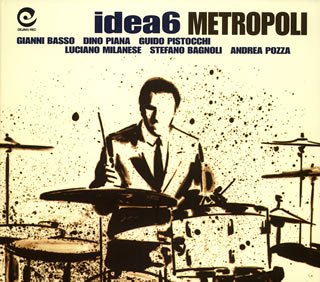
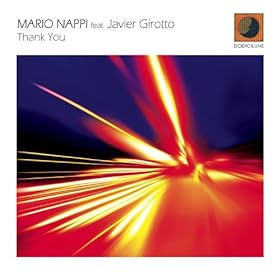


 2. Detour Ahead
2. Detour Ahead 
